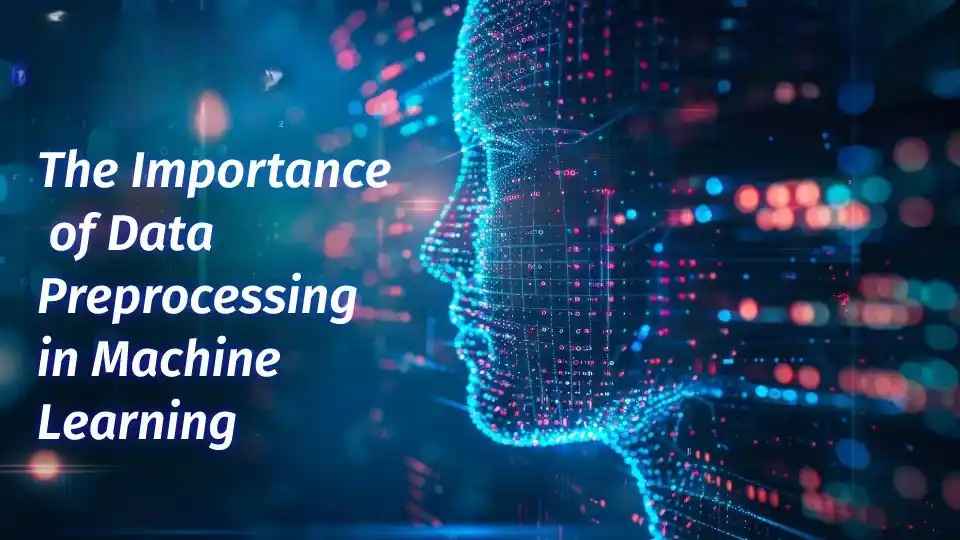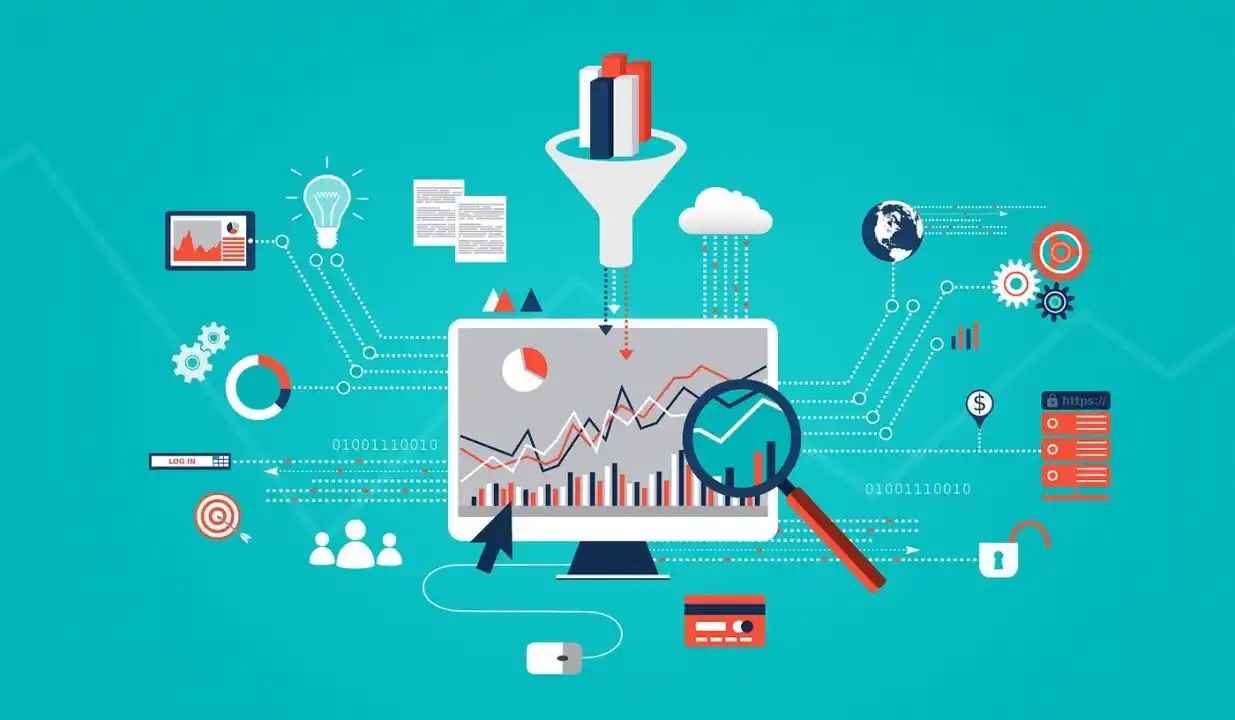Data Preprocessing in Machine Learning
Updated on : 7 May 2025

Image Source: google.com
Table Of Contents
- 1. Introduction
- 2. Importance of Data Preprocessing in ML
- 3. Key Stages in the Data Preprocessing Pipeline
- 4. Real-World Examples of Data Preprocessing
- 5. Effective Techniques and Industry Standards
- 6. How to Select the Right Preprocessing Tools
- 7. Final Thoughts on Preprocessing for ML Success
- 8. Benefits of Clean and Structured Data
- 9. Handling Missing, Noisy, and Incomplete Data
- 10. Transforming Data for Model Compatibility
- 11. Encoding, Normalization and Scaling Techniques
- 12. Choosing Between Manual and Automated Preprocessing
- 13. FAQs
Table Of Contents
Introduction
Data Preprocessing in Machine Learning is like prepping your ingredients before cooking—cleaning, sorting, and slicing data to perfection! It handles missing values, encodes text, scales numbers, and clears noise so your model learns faster and performs better.
Importance of Data Preprocessing in ML

Image Source: google
Data Preprocessing in Machine Learning is a vital step that transforms raw data into a clean, structured format, helping models learn more effectively and deliver accurate results.
- 🎯Improves Accuracy
- Data Preprocessing in Machine Learning ensures the model learns from high-quality, reliable data.
- 🧩Handles Missing Data
- It fills or removes gaps, allowing algorithms to make better decisions.
- 🧹Removes Noise
- By filtering out irrelevant or inconsistent data, preprocessing improves model focus.
- 📏Normalizes Values
- Scaling data to a consistent range boosts training speed and performance.
- 🔠Encodes Categorical Data
- Data Preprocessing in Machine Learning converts text labels into numerical format for better understanding.
- ⚖️Reduces Bias
- Balances data to prevent biased or skewed model outcomes.
- ⏱️Saves Time
- Clean, preprocessed data shortens training time and increases efficiency.
- 🔧Ensures Compatibility
- Makes sure the data matches the format and structure required by ML algorithms.
Key Stages in the Data Preprocessing Pipeline
| 🔄 Stage | 📌 Description |
|---|---|
| Data Cleaning | Remove or fix missing, duplicate, or inconsistent data for better quality. |
| Data Transformation | Convert data types, normalize ranges, and apply mathematical operations. |
| Encoding | Convert categorical values into numerical formats (e.g., one-hot, label encoding). |
| Feature Scaling | Scale features using normalization or standardization for balanced input. |
| Feature Selection | Pick the most relevant features to improve model efficiency and reduce noise. |
| Data Integration | Combine data from different sources into a unified dataset. |
| Data Splitting | Divide data into training, testing (and validation) sets for model evaluation. |
| Outlier Detection | Identify and handle unusual values that can skew results. |
Real-World Examples of Data Preprocessing

Image Source: google
| 🌍 Real-World Scenario | 🛠️ Preprocessing Example |
|---|---|
| 🏥 Healthcare Data | Fill in missing patient records, encode disease categories, normalize lab results. |
| 🛒 E-commerce Analytics | Remove duplicate transactions, encode product categories, scale purchase amounts. |
| 🎓 Student Performance | Handle missing scores, convert grades to numerical, remove outliers. |
| 🚗 Self-Driving Cars | Normalize sensor input, remove noise from images, encode road signs. |
| 📱 Social Media Analysis | Clean text data, remove emojis/stopwords, encode sentiment labels. |
| 🏦 Banking & Finance | Detect outliers in transaction data, encode account types, handle missing values. |
| 🎮 Game Analytics | Standardize player stats, filter invalid events, encode level completion states. |
| 📈 Stock Market Prediction | Smooth noisy price data, scale time series values, remove extreme outliers. |
Effective Techniques and Industry Standards
To ensure high-performing models, Data Preprocessing in Machine Learning follows proven techniques and standards widely adopted across industries.
- 🔍 Handling Missing Values
- Use techniques like mean/median imputation or deletion to deal with incomplete data.
- 📏 Feature Scaling
- Apply normalization (Min-Max) or standardization (Z-score) to bring features to a similar range.
- 🔢 Encoding Categorical Data
- Use label encoding or one-hot encoding to convert non-numerical data into machine-readable format.
- 🧹 Data Cleaning
- Remove duplicates, fix formatting errors, and correct inconsistencies in the dataset.
- 🎯 Feature Selection
- Select only the most relevant features using techniques like correlation analysis or recursive feature elimination.
- 📊 Outlier Detection
- Identify and treat unusual data points using statistical methods or visualization tools.
- 🔄 Data Transformation
- Log transforms, binning, and polynomial features are used to make data more model-friendly.
- 🧪 Train-Test Split
- Standard practice is to split the dataset into training and testing sets (e.g., 80/20) for evaluation.
- 📁 Data Integration
- Combine data from multiple sources while resolving conflicts and ensuring consistency.
- 📦 Industry Tools & Libraries
- Use libraries like Scikit-learn, Pandas, TensorFlow Data API, and PySpark for efficient preprocessing.
How to Select the Right Preprocessing Tools
| Consideration | Tools/Techniques |
|---|---|
| Data Type | Numerical: StandardScaler, One-Hot Encoding for categories, Tokenization for text. |
| Missing Values | Impute: Mean/Median for numerical, KNN for complex. |
| Outliers | Z-score, IQR, Isolation Forest, DBSCAN. |
| Scaling | StandardScaler, MinMaxScaler, RobustScaler. |
| Encoding | Label Encoding (Ordinal), One-Hot Encoding (Nominal). |
| Noise Reduction | Moving Averages (time-series), Gaussian Blur (images). |
| Text Processing | Clean text, Tokenize, TF-IDF, Word2Vec. |
| Domain-Specific | Healthcare: Normalize, Encode categories. E-commerce: Remove Duplicates. |
| Time-Series | Moving Averages, Lag Features. |

you want to hire SQL Developer?
Final Thoughts on Preprocessing for ML Success

Image Source: google
| Final Thoughts | Key Considerations |
|---|---|
| Understand Data | Know data type and domain to choose the right preprocessing. |
| Handle Missing Data | Impute or remove missing values carefully. |
| Deal with Outliers | Use statistical or machine learning methods for outliers. |
| Scale and Normalize | Ensure features are on the same scale. |
| Encode Categorical Data | Use One-Hot or Label Encoding. |
| Clean Text Data | Tokenize and remove noise for NLP tasks. |
| Feature Engineering | Create meaningful features from raw data. |
| Test Preprocessing | Try different techniques to improve performance. |
Benefits of Clean and Structured Data
| Benefit | Description |
|---|---|
| Improved Model Accuracy | Clean data helps models learn patterns more effectively. |
| Faster Training | Well-structured data reduces processing time. |
| Easier Debugging | Fewer errors and inconsistencies make issues easier to trace. |
| Better Insights | Clean data leads to clearer and more reliable analysis. |
| Efficient Storage | Removing duplicates and irrelevant data saves space. |
Handling Missing, Noisy, and Incomplete Data
| Data Issue | Handling Method |
|---|---|
| Missing Data | Impute using mean, median, or mode; or remove rows/columns. |
| Noisy Data | Use smoothing techniques like binning, regression, or moving averages. |
| Incomplete Data | Fill in missing values or use default/estimated values based on context. |
Transforming Data for Model Compatibility

Image Source: google
Data Preprocessing in Machine Learning is a crucial step to ensure that raw data is converted into a format suitable for machine learning models.
- Understanding the Data
- Identify data types (numerical, categorical, text, etc.)
- Check for missing values, duplicates, and errors.
- Handling Missing Values
- Impute missing data (mean, median, KNN) or remove missing entries.
- Dealing with Outliers
- Detect and handle outliers using statistical methods (e.g., Z-score, IQR).
- Scaling and Normalization
- Scale features to a standard range using techniques like StandardScaler or MinMaxScaler to avoid bias in models.
- Encoding Categorical Data
- Convert categorical data to numerical format using techniques like one-hot encoding or label encoding.
- Text Data Processing
- Clean and tokenize text, remove stopwords, and vectorize (e.g., TF-IDF or Word2Vec) for natural language processing tasks.
- Feature Engineering
- Create new features or transform existing ones to improve model performance.
- Testing Preprocessing Techniques
- Experiment with different preprocessing methods to find the best fit for the model.
Unlock Valuable Insights with Our Big Data Analytics services in Hexadecimal Software
Encoding, Normalization and Scaling Techniques
| Technique | Description |
|---|---|
| Encoding | Convert categorical data to numerical values. Common methods: One-Hot Encoding, Label Encoding, and Frequency Encoding. |
| Normalization | Scale data to a fixed range (usually 0 to 1) to avoid features dominating the model. Example: MinMaxScaler. |
| Scaling | Adjust features to have a specific statistical property. Common methods: StandardScaler (zero mean, unit variance), RobustScaler (handling outliers). |

Looking SQL Developer For your business?
Choosing Between Manual and Automated Preprocessing

Image Source: google
When Choosing Between Manual and Automated Preprocessing in Data Preprocessing in Machine Learning, each method offers unique advantages depending on the task and dataset.
- Manual Preprocessing
- Customization: Provides flexibility to tailor preprocessing steps specifically to the dataset.
- Time-Consuming: It requires more time and effort to clean and prepare data manually.
- Human Insight: Leverages domain expertise to make informed decisions about handling data intricacies.
- Use Case: Best for small datasets or when handling complex, domain-specific data issues that require careful consideration.
- Automated Preprocessing
- Speed: Automates tasks like handling missing values, scaling, and encoding, making it faster.
- Consistency: Ensures uniformity in preprocessing, reducing the risk of human error.
- Less Customization: May not capture domain-specific nuances or complex relationships in the data.
- Use Case: Ideal for large datasets, or when time efficiency is crucial and when there's less need for custom handling.
In Data Preprocessing in Machine Learning, the choice between manual and automated preprocessing depends on factors such as dataset size, complexity, and the need for domain-specific adjustments.
FAQs
Q.1. What is data preprocessing?
A : It’s the process of cleaning and preparing raw data for machine learning models.
Q.2. Why is preprocessing important?
A : It improves data quality and model accuracy.
Q.3. What are common preprocessing steps?
A : Handling missing values, scaling, encoding, and outlier removal.
Q.4. What is scaling in preprocessing?
A : Adjusting feature values to the same range (e.g., 0–1).
Q.5. What is encoding?
A : Converting categorical data into numerical form.
Q.6. When should I normalize data?
A : When features have different ranges or units.
Q.7. What tools can automate preprocessing?
A : Tools like Scikit-learn’s Pipeline , AutoML, or pandas.
Q.8. Is manual preprocessing better than automated?
A : Manual gives control; automated saves time—depends on the task.
Q.9. Can I skip preprocessing?
A : No, it’s essential for accurate and reliable models.
Q.10. Is preprocessing the same for all data types?
A : No, it varies for text, images, time-series, and structured data.


